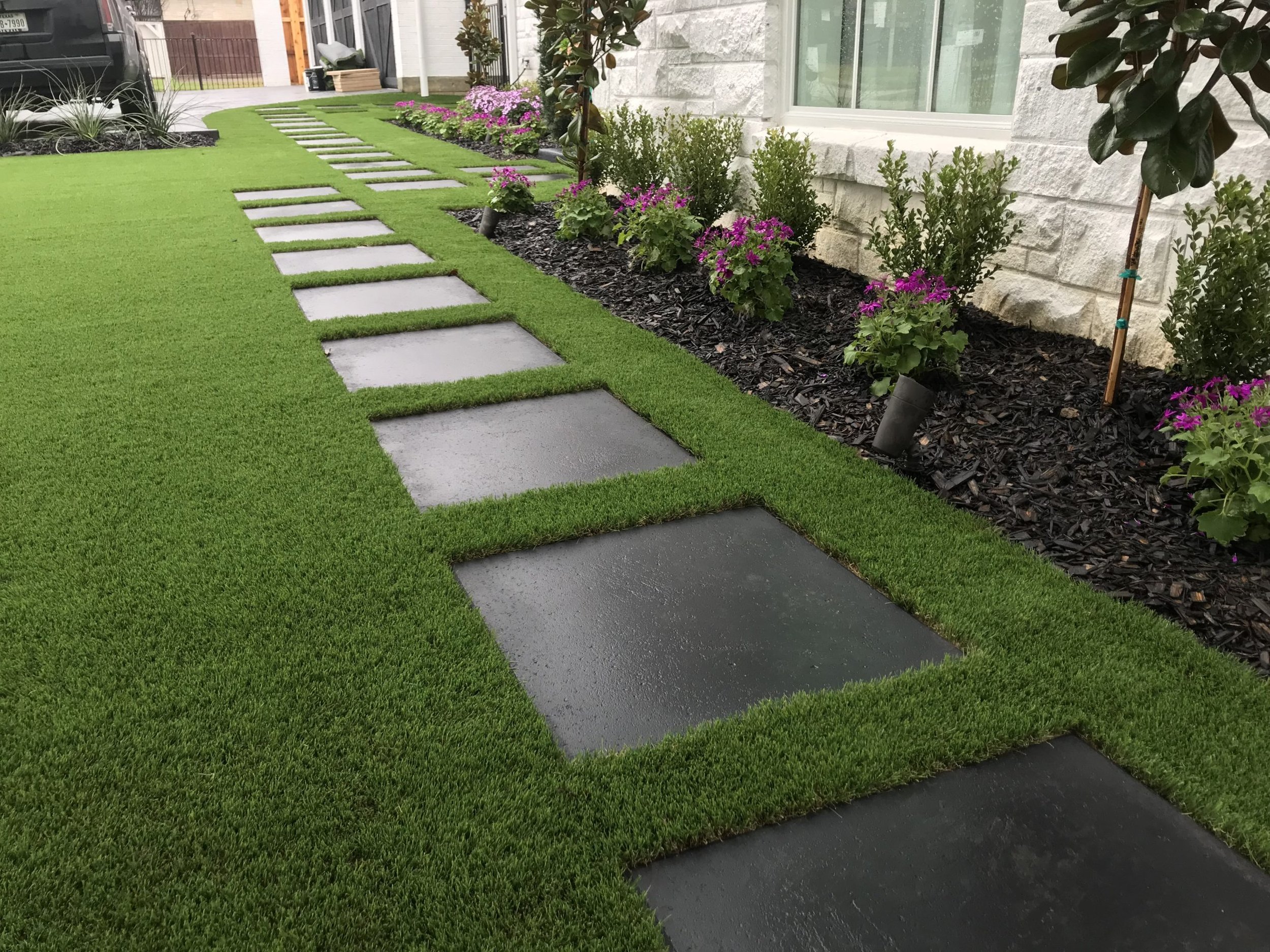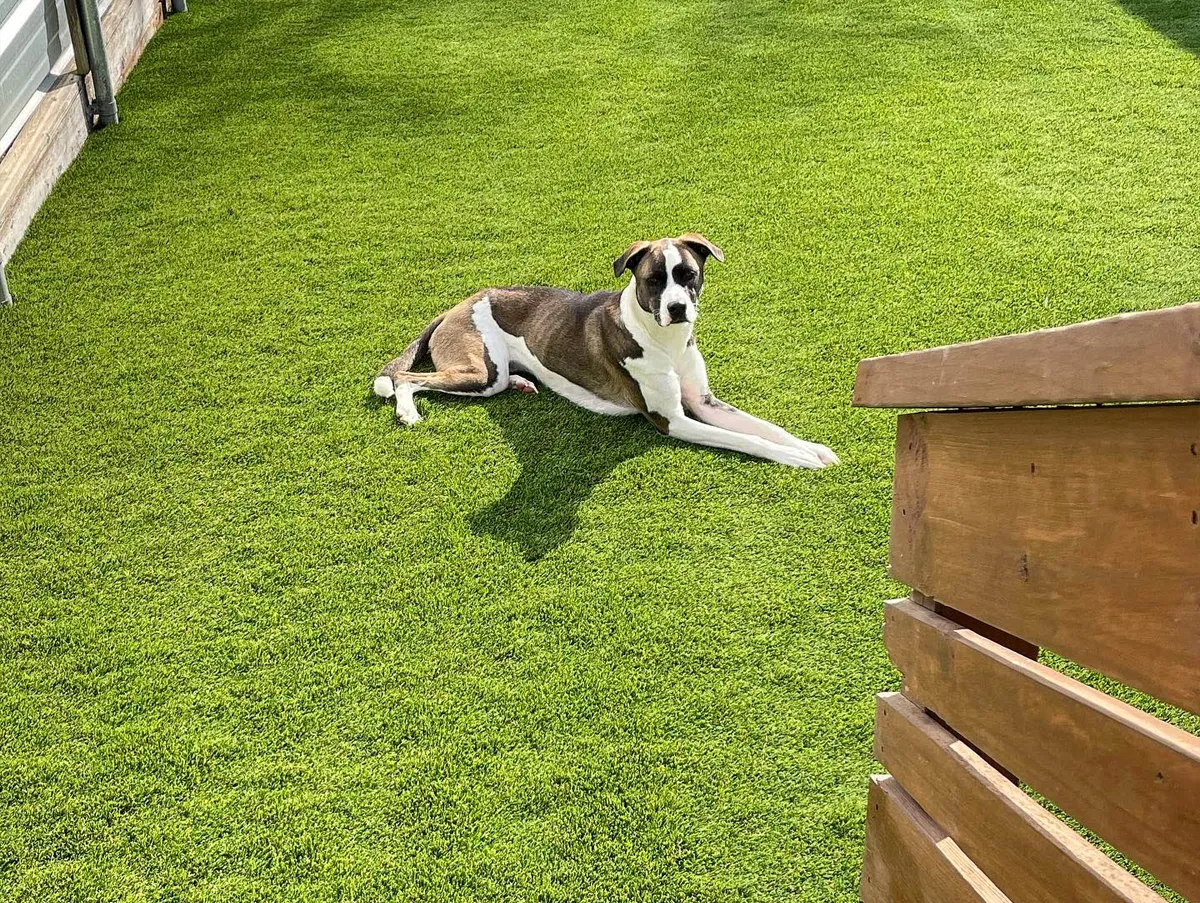Explore the Environmental Perks of Opting for Artificial Turf Solutions
The fostering of synthetic grass solutions provides a compelling opportunity to address pushing ecological obstacles. By dramatically reducing water use and lessening the application of unsafe chemicals, these choices not only promote sustainable landscape design however likewise safeguard local communities. The lower carbon impact linked with lowered upkeep activities adds to a more lasting method to land management. Nevertheless, the ramifications of these advantages prolong beyond mere conservation initiatives, raising inquiries regarding their long-term influence on environment preservation and general ecological balance. Checking out these dimensions discloses a complex interaction worth taking into consideration.
Water Conservation Benefits
One of the most significant benefits of synthetic grass is its capability to conserve water. Typical turf yards require significant watering, especially in areas vulnerable to drought or water limitations. On the other hand, synthetic grass does not require watering, significantly minimizing the total need for water sources. This function is particularly advantageous in deserts where water shortage is a pushing problem.
By getting rid of the need for routine watering, synthetic turf adds to lasting landscape practices and aids alleviate the ecological influence of extreme water consumption. Additionally, the preservation of water includes the decrease of runoff, which can cause dirt disintegration and river pollution.
In addition, the installment of artificial lawn allows towns and house owners to designate water sources extra effectively, concentrating on important uses such as drinking water and agriculture. The shift towards synthetic grass not only advertises liable water use yet also aligns with broader ecological objectives intended at maintaining natural deposits.
As areas significantly focus on sustainability, the water preservation benefits of artificial turf present an engaging case for its fostering in industrial and domestic landscape design tasks.
Minimized Chemical Usage
The shift to synthetic turf considerably decreases the reliance on chemical therapies frequently used in all-natural yard upkeep. Conventional lawn administration typically entails the application of fertilizers, herbicides, and chemicals to advertise development and control insects. These chemicals can posture dangers to human health, neighborhood wildlife, and the setting, adding to dirt and water contamination.
In contrast, man-made lawn eliminates the requirement for these hazardous compounds. By lessening the launch of artificial substances right into the ecosystem, man-made grass promotes healthier dirt and water systems.
Furthermore, the lack of chemical drainage linked with synthetic grass installments aids shield neighborhood waterways from pollution, supporting aquatic life and keeping biodiversity. Artificial turf companies phoenix. As neighborhoods progressively prioritize sustainable methods, choosing for synthetic turf provides a feasible option that lines up with environmental preservation objectives. Via this shift, homeowner can enjoy lush environment-friendly areas without jeopardizing environmental health, leading the way for a more lasting future
Reduced Carbon Footprint

Moreover, the installation of synthetic grass can result in significant water preservation. Natural yards call for considerable amounts of water for watering, which not just includes in the carbon footprint connected with water extraction and treatment however additionally strains local water sources. On the other hand, synthetic grass requires marginal maintenance, requiring no watering, consequently dramatically decreasing water use and its linked power expenses.
Additionally, the durability of fabricated lawn adds to its decreased carbon effect. With a life expectancy of approximately 15 years or even more, the requirement for regular substitutes is reduced, causing less waste and lower power intake in production and disposing of conventional lawn options. Generally, artificial turf presents a sustainable alternative for eco mindful landscaping.
Habitat Preservation
Environment preservation is a crucial consideration in the discussion over landscape design choices, particularly when contrasting synthetic grass to natural grass. Natural click resources yard lawns often call for considerable maintenance, including the use of chemicals, fertilizers, and herbicides, which can negatively impact neighborhood ecological communities. These chemicals can seep right into the soil and rivers, hurting native flora and animals and interrupting neighborhood habitats.
On the other hand, synthetic lawn provides an opportunity to minimize the ecological footprint of landscape design. By choosing for artificial turf, house owners can minimize the interruption of all-natural habitats connected with standard grass care practices. Synthetic grass removes the need for hazardous chemicals, thereby securing neighboring wildlife and preserving the stability of bordering communities. The installation of fabricated turf can lead to the conversion of previous turf areas into more biodiverse landscapes, such as pollinator gardens or native plant areas, which can sustain local wildlife.
Ultimately, the transition to synthetic grass not only preserves water and lowers maintenance initiatives yet additionally promotes a more harmonious relationship in between human tasks and the native environment, promoting environment preservation in the procedure.
Long-Term Sustainability
Long-lasting sustainability is a critical element in reviewing the benefits of synthetic grass over conventional lawn lawns. Among the most significant benefits of synthetic grass is its longevity; it can last as much as 15-20 years with very little maintenance, whereas all-natural turf calls for regular reseeding and substitute. This durability reduces the requirement for constant sources, such as water, plant foods, and chemicals, Get the facts which are necessary for maintaining a healthy turf lawn.
Additionally, synthetic grass adds to a reduction in carbon discharges connected with lawn care devices. Traditional yards often require gas-powered lawn mowers, trimmers, and blowers, all of which add to air pollution. Phoenix turf companies. In contrast, synthetic grass eliminates the demand for such devices, advertising a cleaner setting
Furthermore, the manufacturing of synthetic grass progressively makes use of recycled materials, enhancing its sustainability profile. As makers take on environment-friendly methods, the ecological impact of artificial turf remains to reduce.

Final Thought
The adoption of synthetic grass services provides considerable ecological advantages, including considerable water conservation, minimized dependence on harmful chemicals, and a lower carbon impact. Synthetic turf help in maintaining all-natural habitats by minimizing land disruption and promoting long-term sustainability via the usage of resilient materials. Collectively, Source these elements underscore the possibility of synthetic grass to contribute positively to ecological wellness and provide a viable choice to standard landscape design techniques in a progressively resource-conscious world.
In contrast, man-made turf does not require watering, considerably decreasing the total demand for water sources. By minimizing the launch of synthetic substances into the ecological community, artificial lawn promotes much healthier soil and water systems.
Moreover, the installment of synthetic lawn can result in considerable water preservation. In contrast, synthetic lawn needs marginal maintenance, calling for no watering, thereby substantially reducing water usage and its linked energy expenses.
